Follow Your Art: Exploring the Trailside Artwork of Bernard Williams
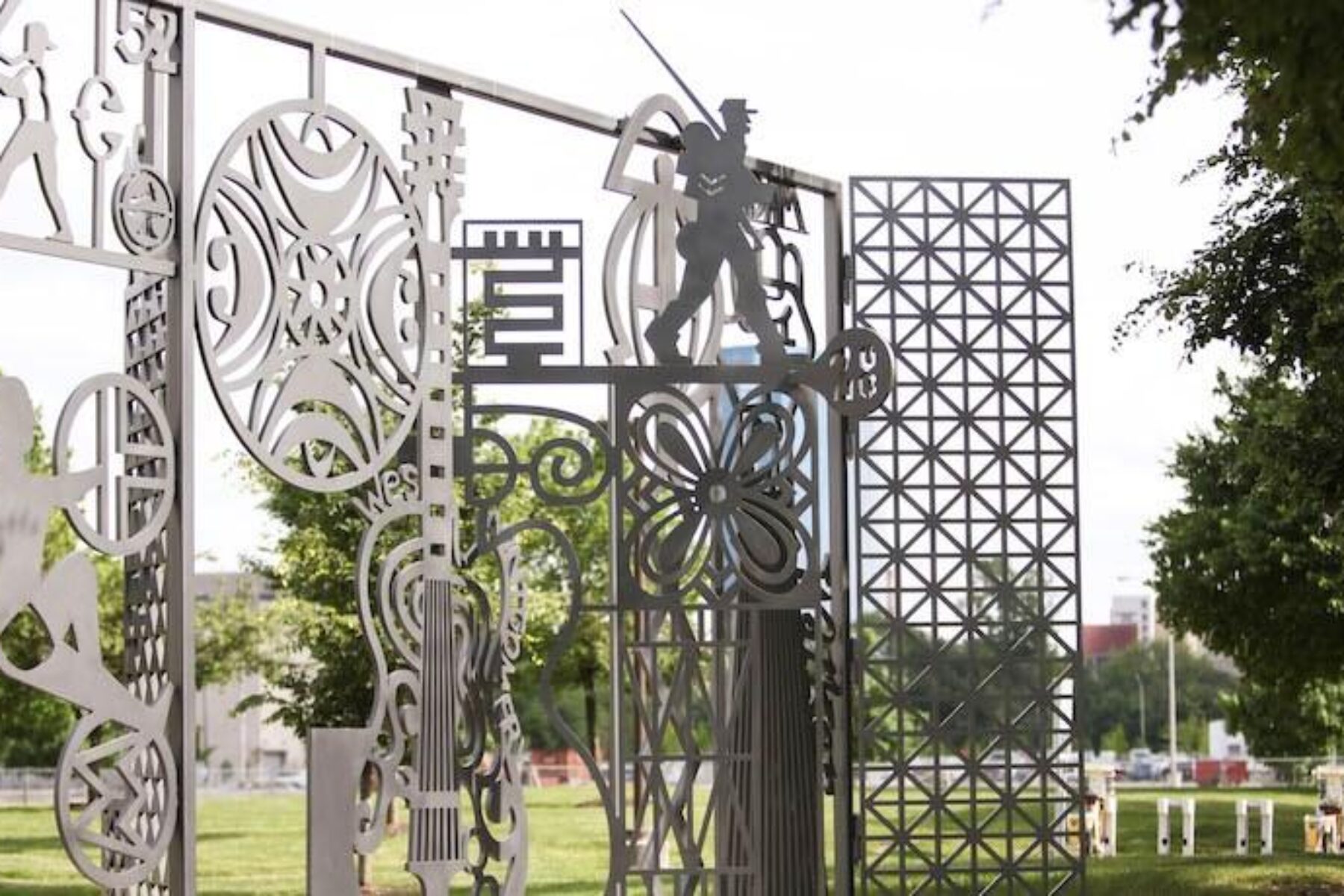
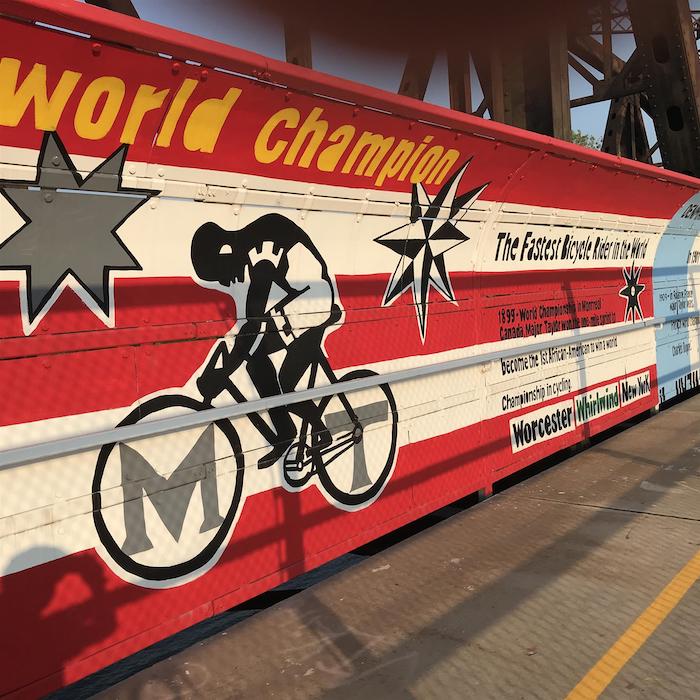
With bold colors, expansive images and quotes writ large across the wall, the sprawling 400-foot Marshall “Major” Taylor mural feels fitting for the larger-than-life legend who was the first Black cyclist to win a world championship. Its creator is nationally acclaimed Chicago-based artist Bernard Williams, who in addition to this piece along the city’s Major Taylor Trail, has trailside artworks featured around the country.
“Connecting art with trails is a beautiful gesture that seems to be happening more often,” reflected Williams. “It seems that cities are realizing that these are important spaces for their communities—providing connections to nature and the environment, and to playfulness and our mental health.”
While Williams has been creating murals for more than 20 years, his more recent passion is sculpture. Along the Indianapolis Cultural Trail, his “Talking Wall” celebrates the city’s Black history and culture. Using steel silhouettes, he created symbolic sculptures—such as a 12-foot hair pick as a tribute to Madam C.J. Walker, widely regarded as America’s first female self-made millionaire—taking inspiration from the abstract patterning he found in Black quilt-making.
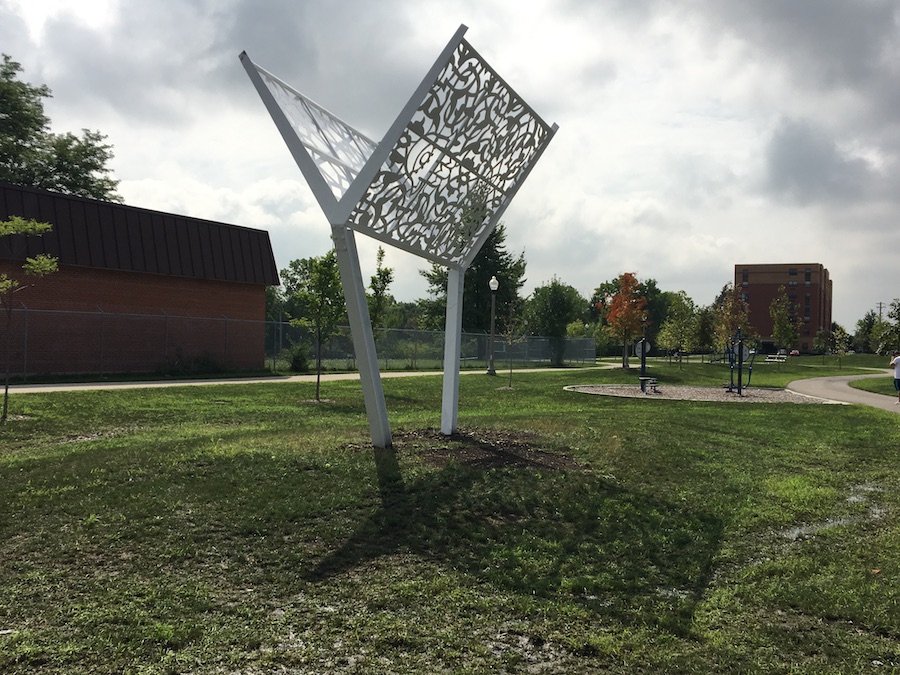
Williams enjoys using symbols in his work—“a language everyone can read”—and also draws inspiration from Egyptian hieroglyphs, ancient Mexican symbols, Chinese calligraphy and other cultures.
“Another thing that happens in that piece is that it casts shadows onto the ground,” explained Williams. “These cutout forms respond to the sun and light, and I thought about that creating a situation where viewers might walk in the shadows of this history.”
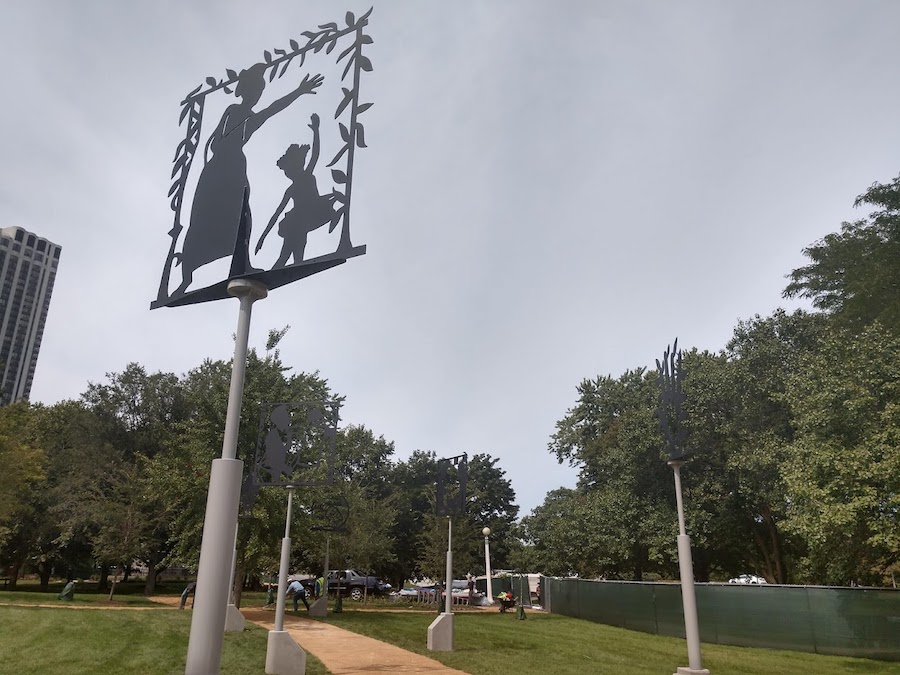
Another laudable woman, Naomi Anderson, is the centerpiece of a current art project; the piece will share the story of the Black suffragist’s life and, in a broader sense, be a tribute to “all women in protest.” The sculpture, located in Charles R. Westcott Park in Anderson’s hometown of Michigan City, Indiana, will include a couple of large cutouts of women on bicycles, which Williams felt represented “an individual in control of their own experience” because riding a bike “requires a certain amount of skill and balance, confidence and power.”
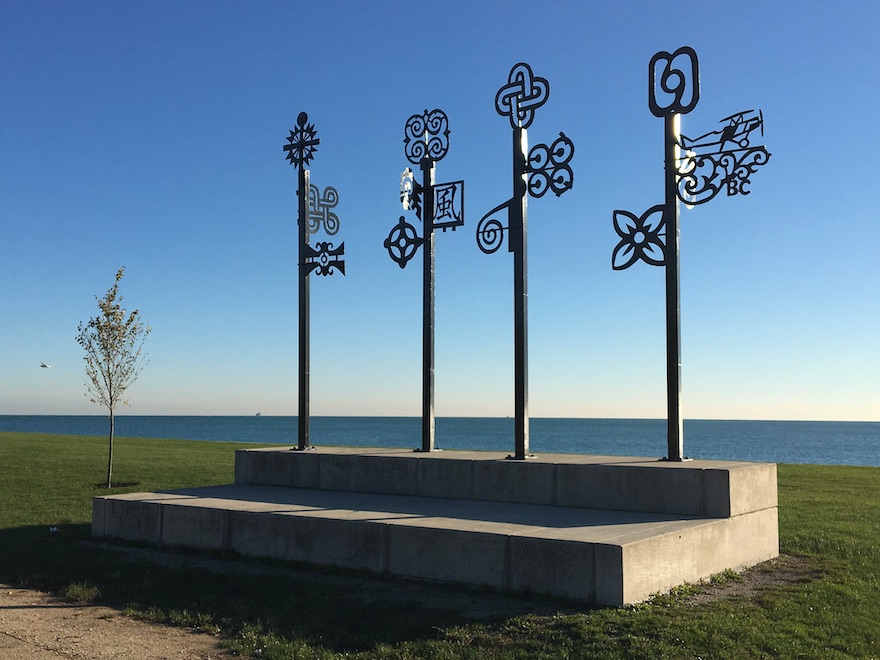
In addition to symbols and shadows, a newer element that Williams is experimenting with is movement. One of his latest works, “Chicago is Community,” entails a series of 12 kinetic sculptures along the Jaffee History Trail, which opened in fall 2021 behind the Chicago History Museum. Similar to the movement of a weathervane, the pieces are installed on tall poles with fins to catch the wind and activate the art. Its creation involved collaboration with park districts from all around the city, and Williams said the personality of each of these communities is reflected in the artwork. This kind of partnership is typical for the projects Williams works on and a “welcomed part of the process.”
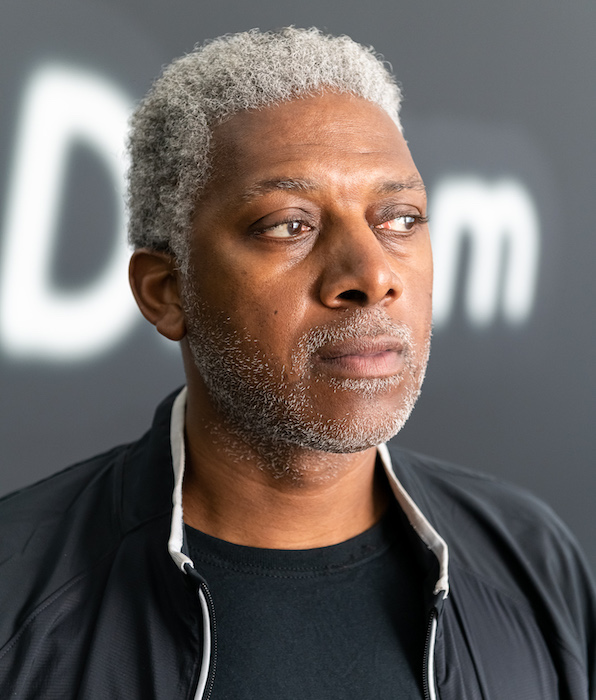
Two other pieces are located just off one of Williams’ favorite pathways, the Chicago Lakefront Trail, which spans nearly the length of the city: “Letter to Bessie Coleman,” dedicated to an aviation pioneer with symbols on poles that stretch into the sky, and “Screen Cloud,” featuring patterns of Middle Eastern origin.
“You’re right next to Lake Michigan, and our lake is almost like an ocean,” enthused Williams about the trail. “The water can have some days of being highly active and dramatic—and I think that’s what trails do; they connect us to something bigger.”
Adding art to trails can make that connection deeper and more meaningful, Williams posits. “People are able to engage with some of their own history through the artwork.
Learn more about Bernard Williams and his artwork at bernardwilliamsart.com.
When you subscribe to Rails to Trails magazine, you’ll have access to many other features like this one. Our magazine is a premium of Rails-to-Trails Membership. Join today to start receiving the magazine!

Donate
Everyone deserves access to safe ways to walk, bike, and be active outdoors.
